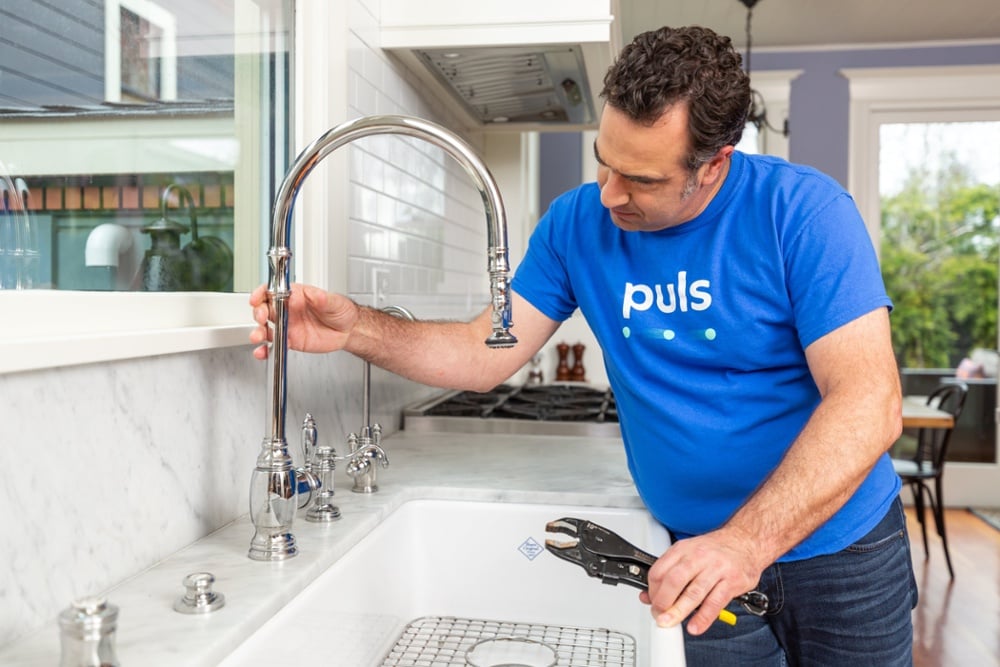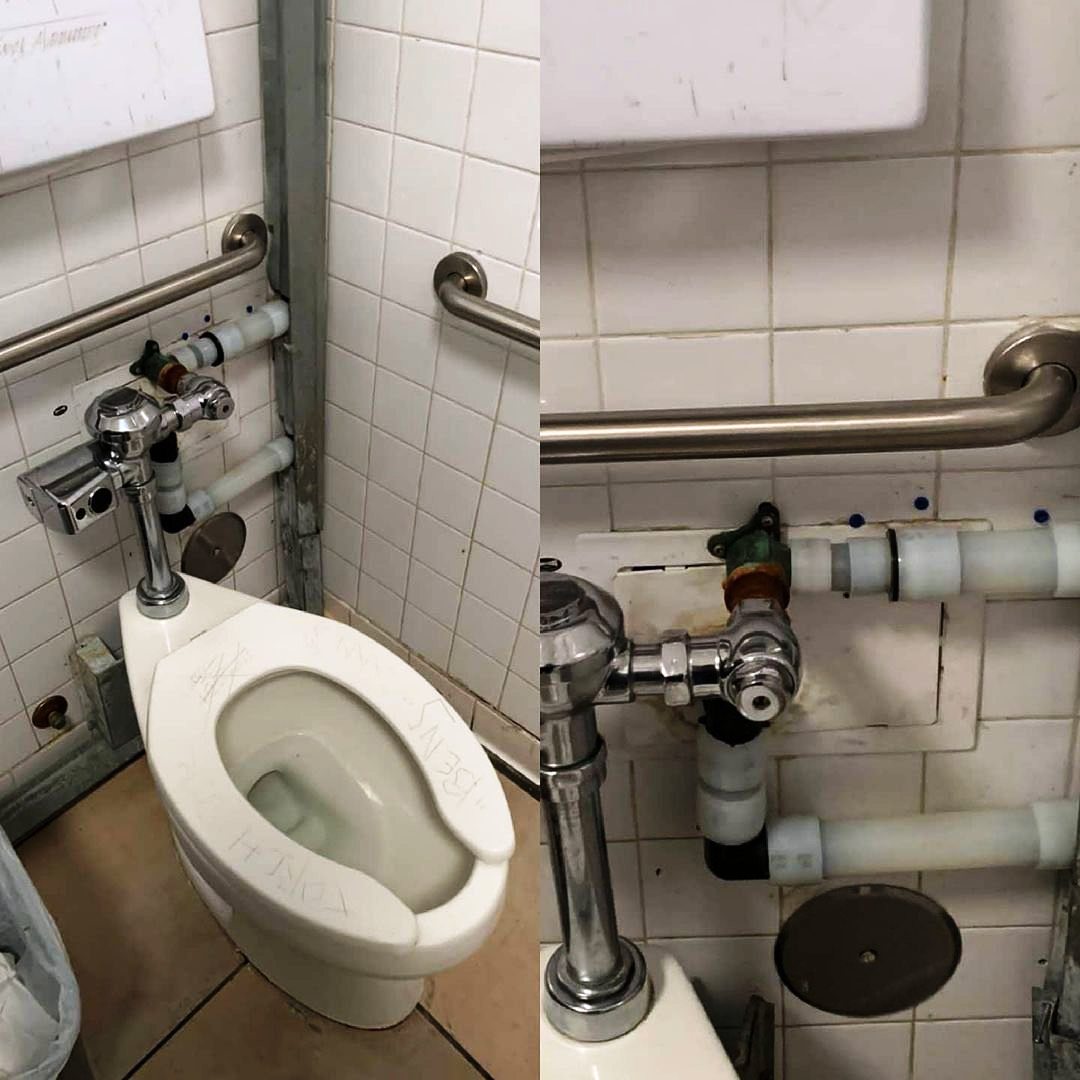Plumbing Noises You Need To Know About
Plumbing Noises You Need To Know About
Blog Article
We've come across this article about Why Do My Plumbing Pipes Make A Knocking Noise below on the internet and accepted it made sense to write about it with you on this site.

To detect noisy plumbing, it is essential to identify very first whether the undesirable sounds happen on the system's inlet side-in various other words, when water is transformed on-or on the drain side. Noises on the inlet side have varied reasons: too much water stress, worn valve and tap components, poorly connected pumps or other home appliances, inaccurately placed pipe fasteners, as well as plumbing runs having too many tight bends or other restrictions. Noises on the drain side typically come from inadequate place or, similar to some inlet side sound, a format containing tight bends.
Hissing
Hissing noise that occurs when a faucet is opened somewhat normally signals too much water stress. Consult your neighborhood public utility if you suspect this problem; it will certainly have the ability to tell you the water pressure in your location and can set up a pressurereducing shutoff on the incoming supply of water pipe if needed.
Various Other Inlet Side Noises
Squeaking, squeaking, scratching, snapping, as well as touching generally are brought on by the expansion or contraction of pipes, typically copper ones supplying warm water. The sounds happen as the pipelines slide versus loosened fasteners or strike nearby home framework. You can often pinpoint the location of the issue if the pipelines are revealed; just follow the noise when the pipelines are making sounds. More than likely you will discover a loose pipeline wall mount or a location where pipes lie so near to floor joists or other framing pieces that they clatter versus them. Connecting foam pipeline insulation around the pipelines at the point of call should correct the trouble. Make certain bands and also hangers are secure and offer appropriate assistance. Where feasible, pipeline bolts must be affixed to substantial structural aspects such as structure wall surfaces instead of to framing; doing so reduces the transmission of vibrations from plumbing to surfaces that can enhance and also move them. If affixing bolts to framework is inescapable, cover pipelines with insulation or other durable material where they get in touch with fasteners, and sandwich the ends of brand-new bolts in between rubber washing machines when mounting them.
Remedying plumbing runs that experience flow-restricting limited or many bends is a last hope that ought to be carried out only after getting in touch with a knowledgeable plumbing service provider. Unfortunately, this situation is fairly usual in older residences that might not have actually been built with indoor plumbing or that have seen a number of remodels, particularly by amateurs.
Babbling or Shrieking
Extreme chattering or shrieking that happens when a valve or tap is activated, and that usually goes away when the installation is opened fully, signals loose or malfunctioning interior parts. The remedy is to change the valve or tap with a new one.
Pumps and also devices such as washing equipments and also dishwashing machines can transfer electric motor noise to pipelines if they are incorrectly connected. Connect such products to plumbing with plastic or rubber hoses-never rigid pipe-to isolate them.
Drain Noise
On the drain side of plumbing, the principal goals are to remove surfaces that can be struck by dropping or hurrying water and to shield pipelines to contain inevitable sounds.
In brand-new building, bathtubs, shower stalls, bathrooms, and wallmounted sinks and also basins need to be set on or against resilient underlayments to lower the transmission of noise via them. Water-saving bathrooms and also faucets are much less noisy than standard designs; install them as opposed to older types even if codes in your location still allow using older components.
Drainpipes that do not run up and down to the basement or that branch right into straight pipe runs sustained at floor joists or various other framing present specifically problematic sound problems. Such pipelines are large enough to emit considerable vibration; they likewise carry considerable quantities of water, that makes the situation worse. In new building and construction, define cast-iron soil pipes (the big pipelines that drain pipes commodes) if you can afford them. Their massiveness includes a lot of the sound made by water travelling through them. Additionally, avoid routing drainpipes in walls shown bed rooms as well as areas where people collect. Wall surfaces containing drainpipes ought to be soundproofed as was explained previously, utilizing dual panels of sound-insulating fiber board and also wallboard. Pipelines themselves can be covered with unique fiberglass insulation made for the purpose; such pipes have an impervious vinyl skin (in some cases including lead). Results are not always satisfactory.
Thudding
Thudding sound, often accompanied by shivering pipes, when a faucet or device shutoff is shut off is a problem called water hammer. The noise and also vibration are caused by the reverberating wave of stress in the water, which instantly has no area to go. Occasionally opening up a valve that discharges water quickly right into an area of piping including a restriction, elbow joint, or tee fitting can produce the very same problem.
Water hammer can generally be treated by setting up fittings called air chambers or shock absorbers in the plumbing to which the problem shutoffs or taps are linked. These gadgets allow the shock wave created by the halted circulation of water to dissipate airborne they consist of, which (unlike water) is compressible.
Older plumbing systems may have brief upright sections of capped pipe behind wall surfaces on tap competes the very same purpose; these can at some point loaded with water, minimizing or destroying their performance. The remedy is to drain the water supply entirely by turning off the main water valve and opening up all taps. Then open up the primary supply valve and also close the taps one by one, starting with the tap nearest the valve and also ending with the one farthest away.
WHY IS MY PLUMBING MAKING SO MUCH NOISE?
This noise indeed sounds like someone is banging a hammer against your pipes! It happens when a faucet is opened, allowed to run for a bit, then quickly shut — causing the rushing water to slam against the shut-off valve.
To remedy this, you’ll need to check and refill your air chamber. Air chambers are filled with — you guessed it — air and help absorb the shock of moving water (that comes to a sudden stop). Over time, these chambers can fill with water, making them less effective.
You’ll want to turn off your home’s water supply, then open ALL faucets (from the bathroom sink to outdoor hose bib) to drain your pipes. Then, turn the water back on and hopefully the noise stops! If you’re still hearing the sound, give us a call to examine further.
Whistles
Whistling sounds can be frustrating, as sometimes the source isn’t easily identified. However, if you can pinpoint which faucet or valve that may be the cause, you’ll likely encounter a worn gasket or washer — an easy fix if you replace the worn parts!Whistling sounds from elsewhere can mean a number of things — from high water pressure to mineral deposits. Your best plan of attack here is to give our plumbing experts a call. We’ll be able to determine where the noise is coming from and what the cause may be, then recommend an effective fix!
Cracks or Ticks
Cracking or ticking typically comes from hot water going through cold, copper pipes. This causes the copper to expand resulting in a cracking or ticking sound. Once the pipes stop expanding, the noise should stop as well.
Pro tip: you may want to lower the temperature of your water heater to see if that helps lessen the sound, or wrapping the pipe in insulation can also help muffle the noise.
Bangs
Bangs typically come from water pressure that’s too high. To test for high water pressure, get a pressure gauge and attach it to your faucet. Water pressure should be no higher than 80 psi (pounds per square inch) and also no lower than 40 psi. If you find a number greater than 80 psi, then you’ve found your problem!
Next step is to give us a call in order to install a pressure regulator. Trust us, you don’t want to wait to resolve this issue. Not only is the sound annoying, but high water pressure can be destructive to your home — including damaging certain appliances, like your washer and dishwasher.
Dripping
You might be accustom to the slow quiet drip your kitchen faucet makes. You might have even tuned out your bathroom sink dripping and drabbing all day long — but it’s time to find its cause.
A slow drip could signify a variety of easy to fix issues, such as a worn out O ring, or loose part. And by ignoring the drip, you could be wasting up to 2,000 gallons of water a year! So start conserving water — get it looked at ASAP.
https://www.pwessig.com/blog/2018/december/why-is-my-plumbing-making-so-much-noise-/

I ran across that write up about Why Do My Pipes Make Noises when browsing the web. Loved our blog posting? Please share it. Help others check it out. We thank you for reading our article about Diagnose Unwanted Plumbing Noises.
Check Us Out Report this page